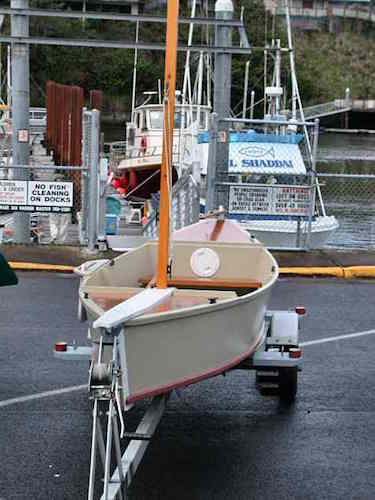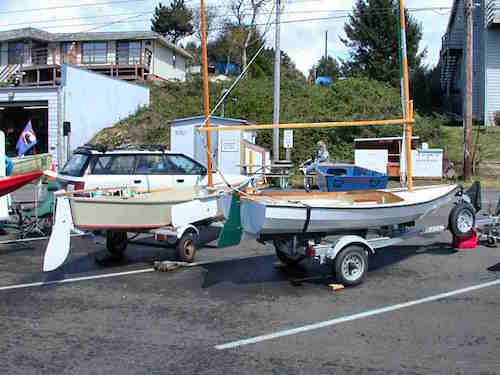I was 17 in the spring of 2020 when I decided that I would build my first wooden sailboat. I had two major criteria for this summer vacation project: the boat had to be small enough to build and store in my garage, and it could cost no more than $1,000. I also hoped the boat would comfortably fit two adults, be easy to trailer, and serve as a light daysailer on protected waters, with oars as the auxiliary power.After reading a set of books loaned from a local boatbuilder, I decided on the 15-1/2′ Surf Crabskiff. Phil Bolger designed it as part of his first line of Instant Boats, and his intention was to create a design that a novice could build as a first boat. He began with his Elegant Punt design and extended its lines forward beyond the bow transom to a raked stem, and aft beyond the stern to a narrow, dory-style tombstone transom. The result, a 16′ cat-rigged sharpie, performs well under sail and oars, and can be built inexpensively by a complete beginner. The Surf was just what I was looking for, and I ordered the plans.The plan set includes two 22″ x 34″ pages of drawings, and three pages of typed instructions, which are very explicit. Dynamite Payson’s book, Instant Boats, includes a step-by-step description of how to build a boat very similar to the Surf. There are also photographs of each step of the process—helpful for those of us who are just learning the vocabulary of boatbuilding.
Join The Conversation
We welcome your comments about this article. If you’d like to include a photo or a video with your comment, please email the file or link.
Comments (11)
Leave a Reply
Stay On Course

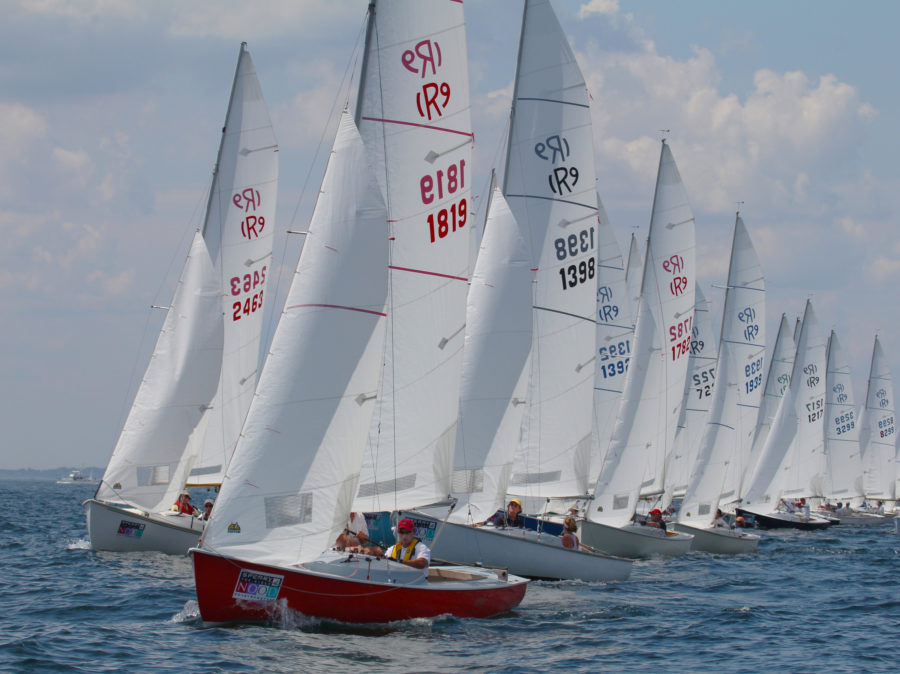

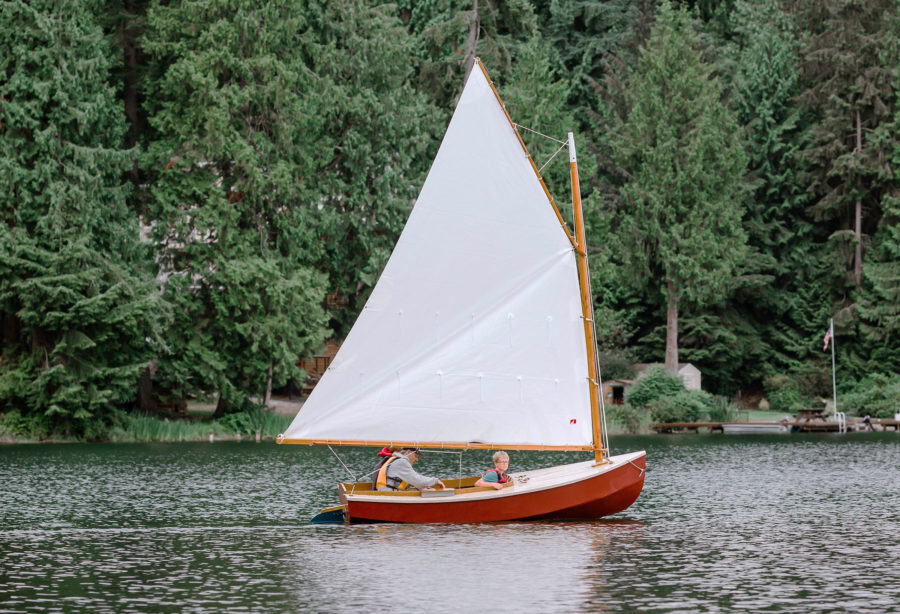
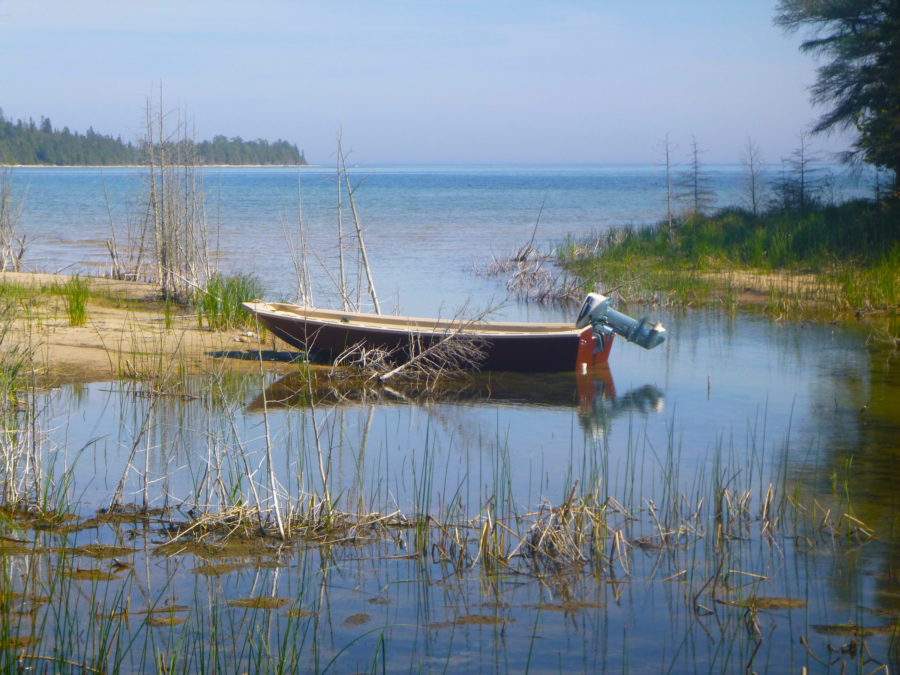
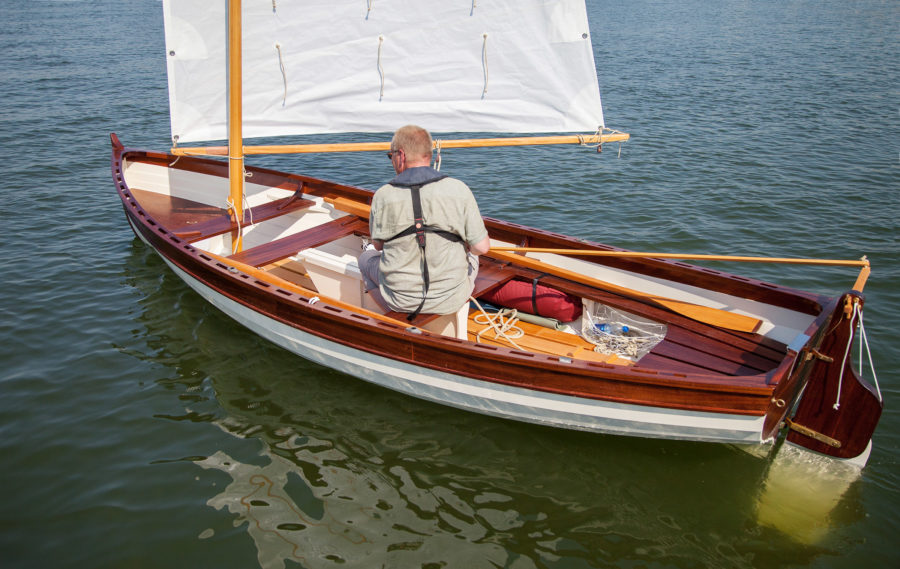
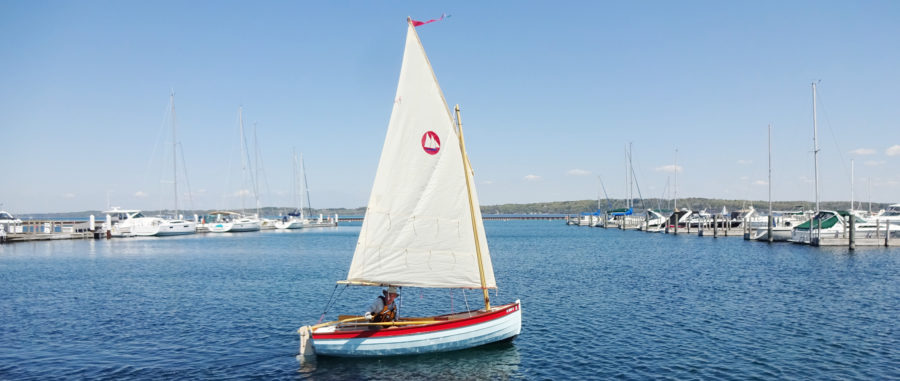
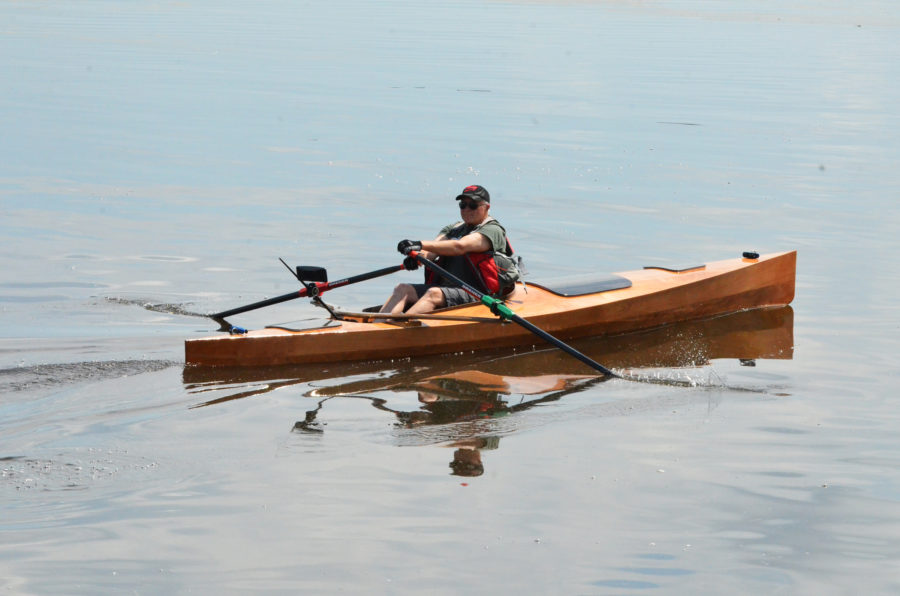
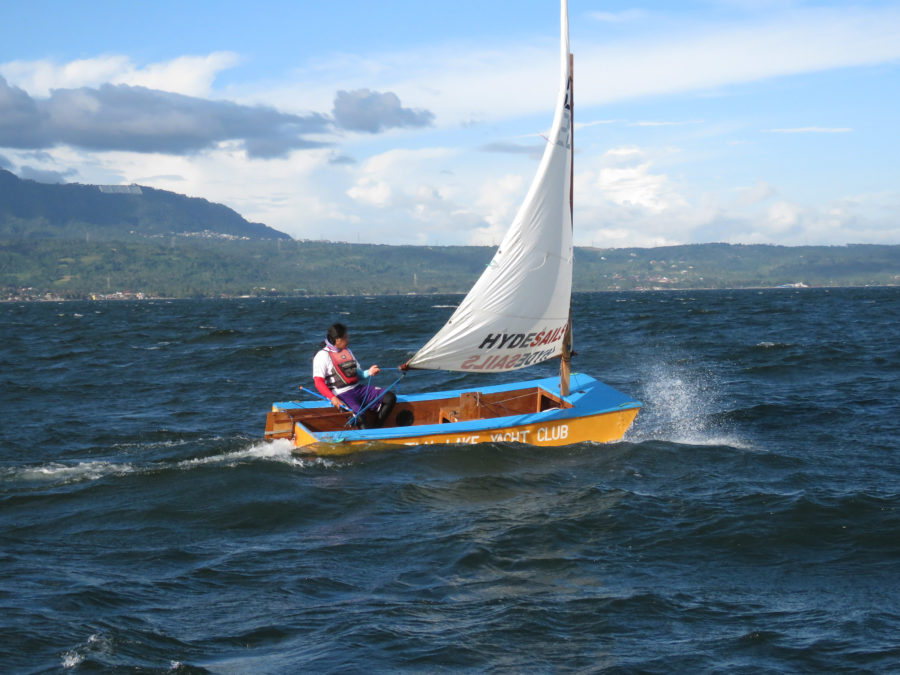
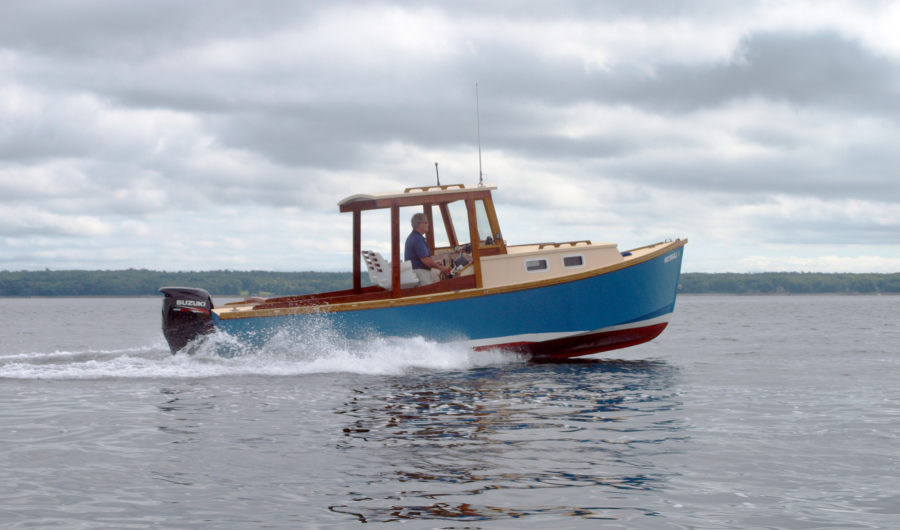
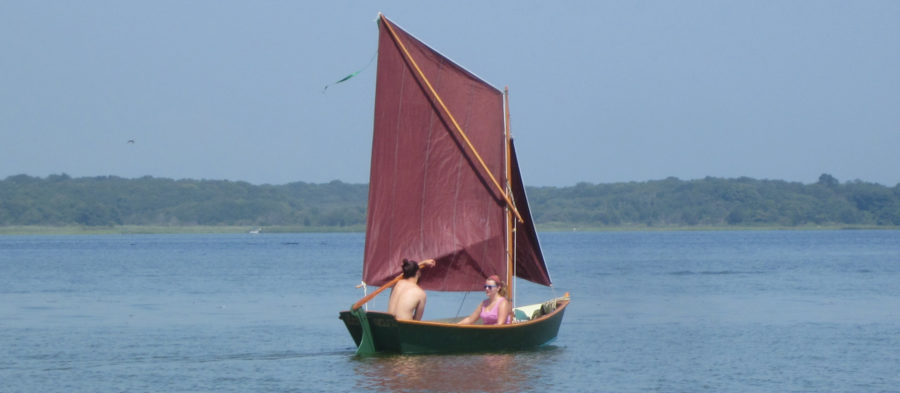
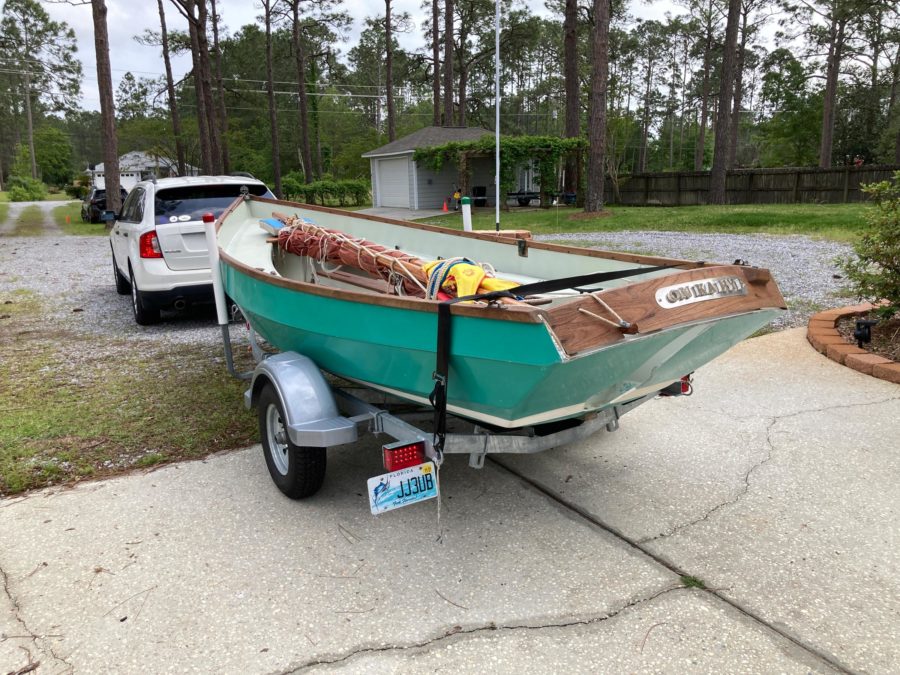
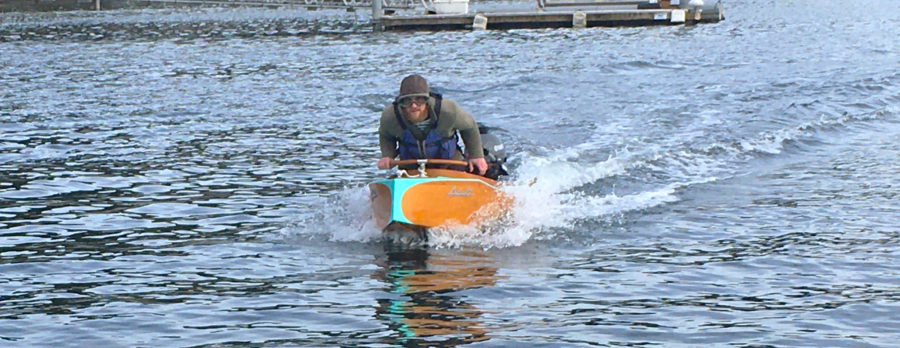
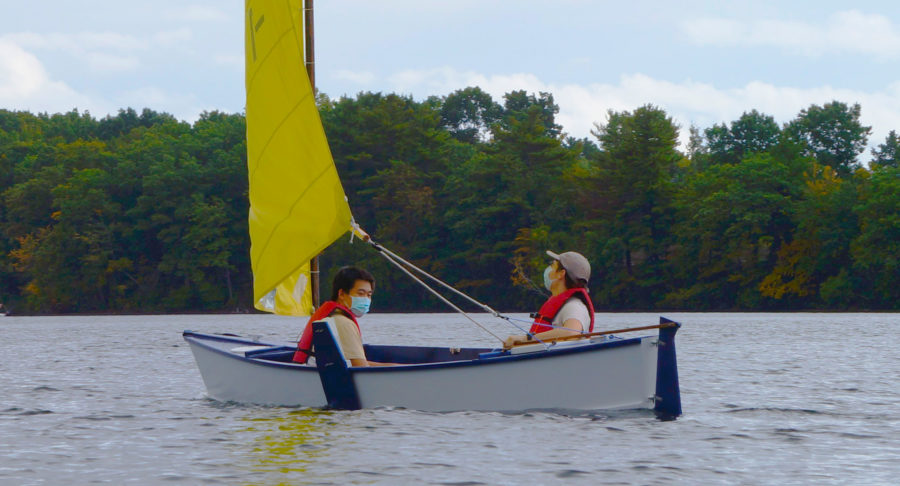
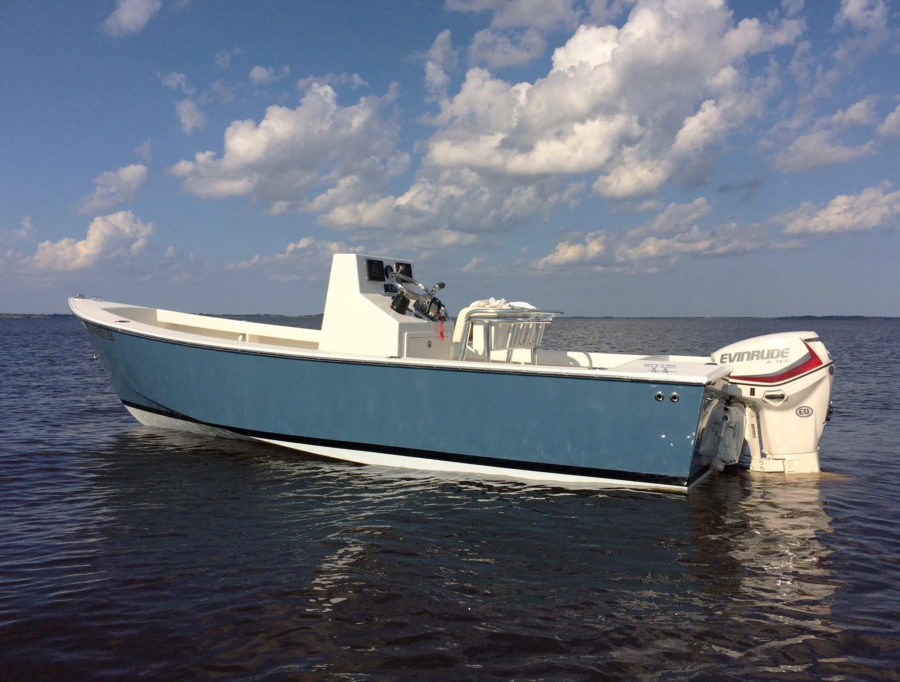
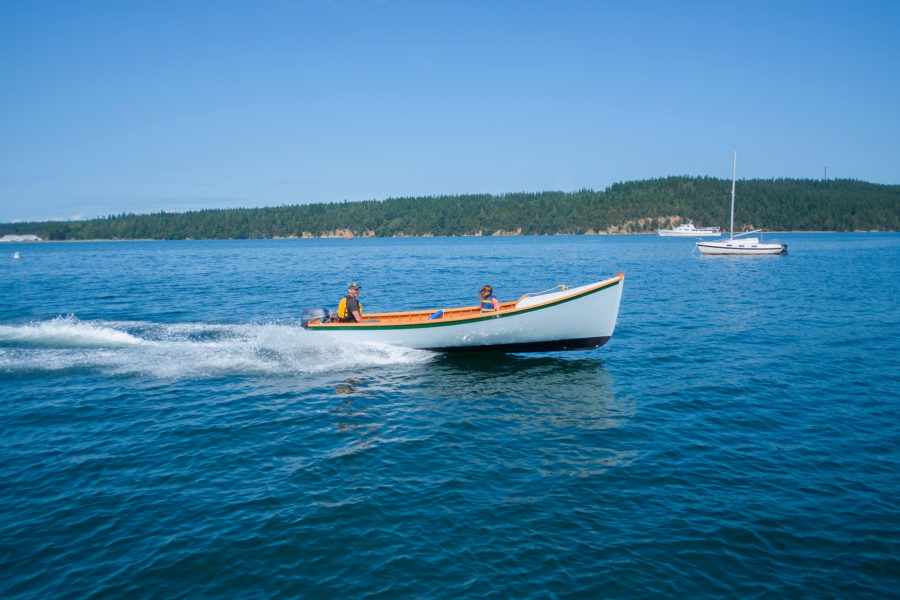
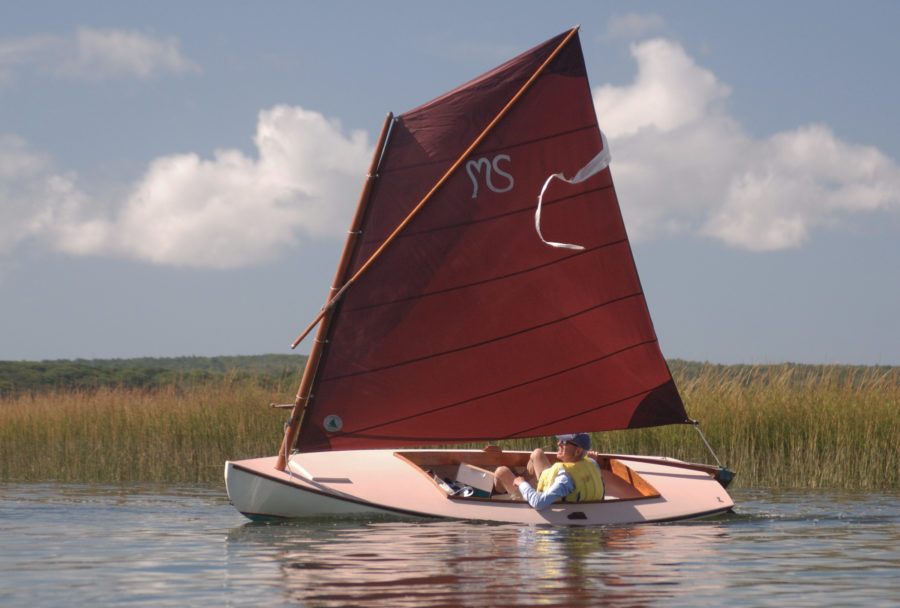
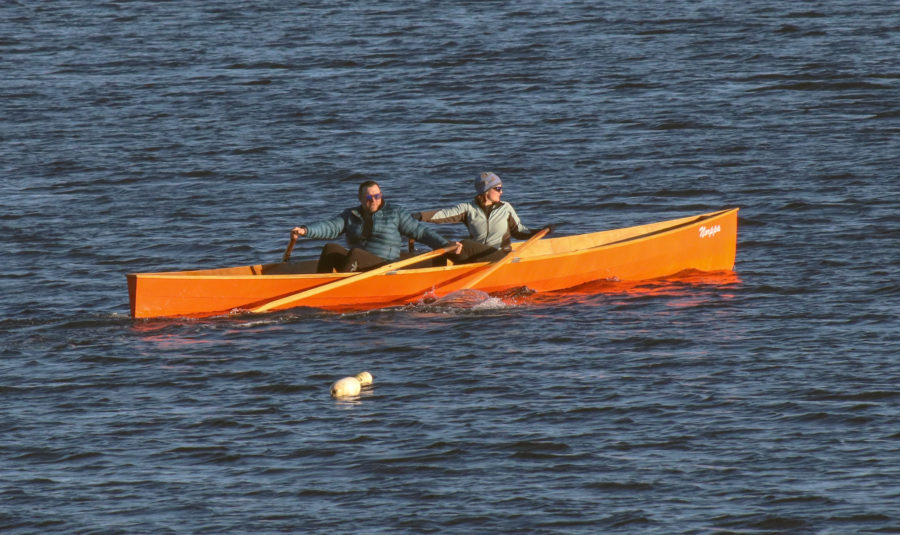
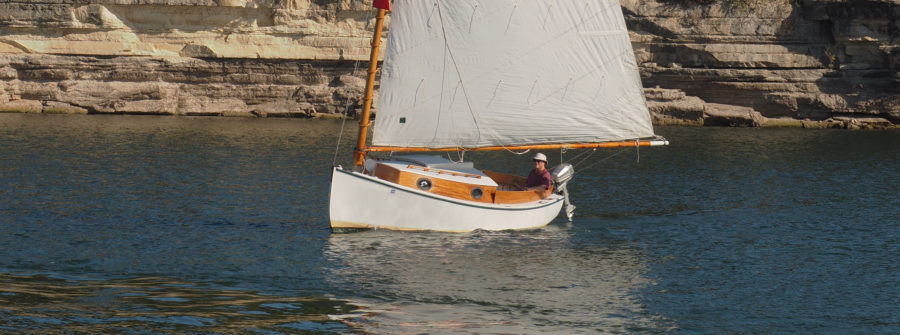
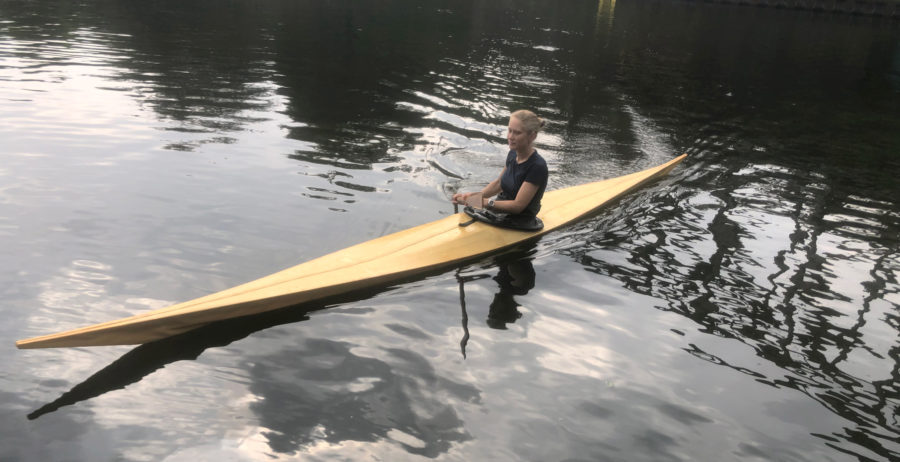
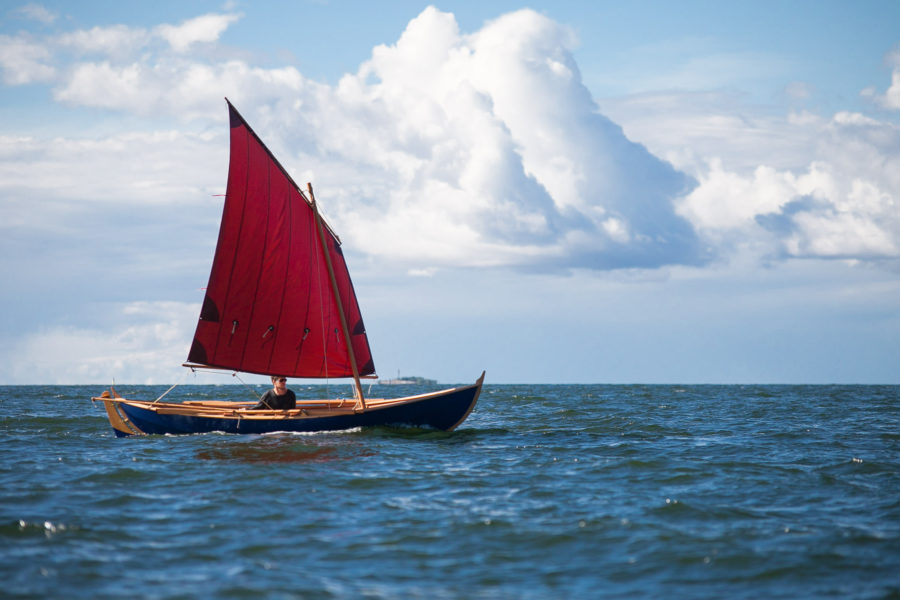
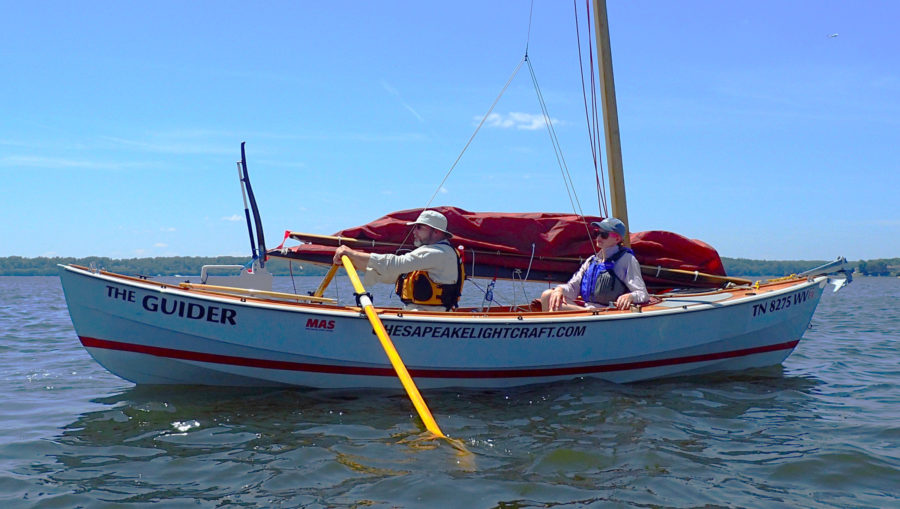
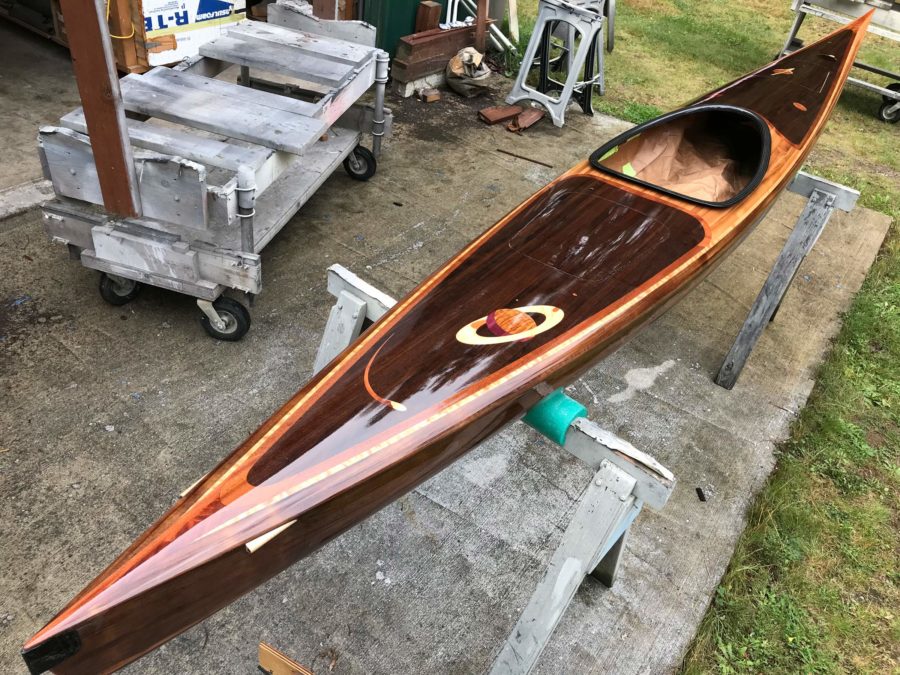
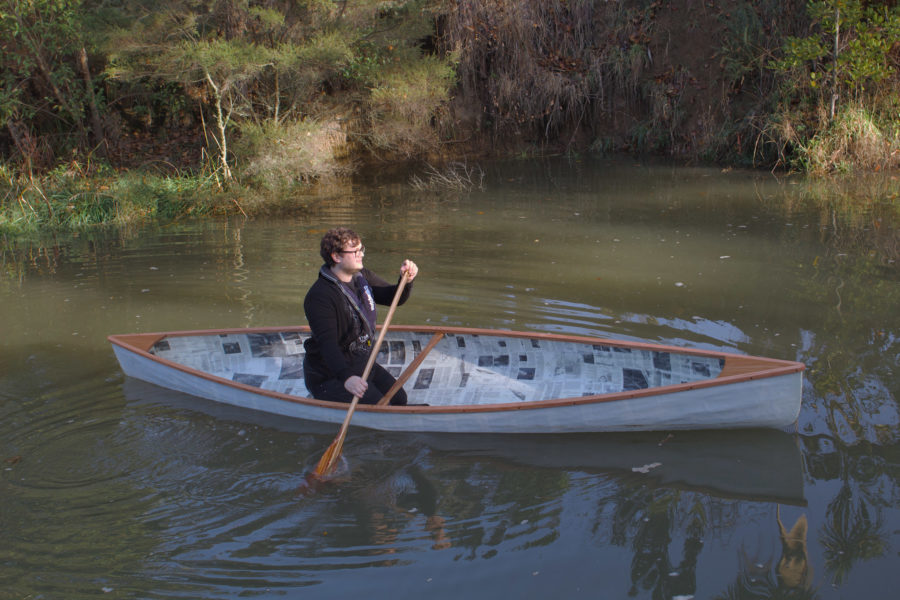
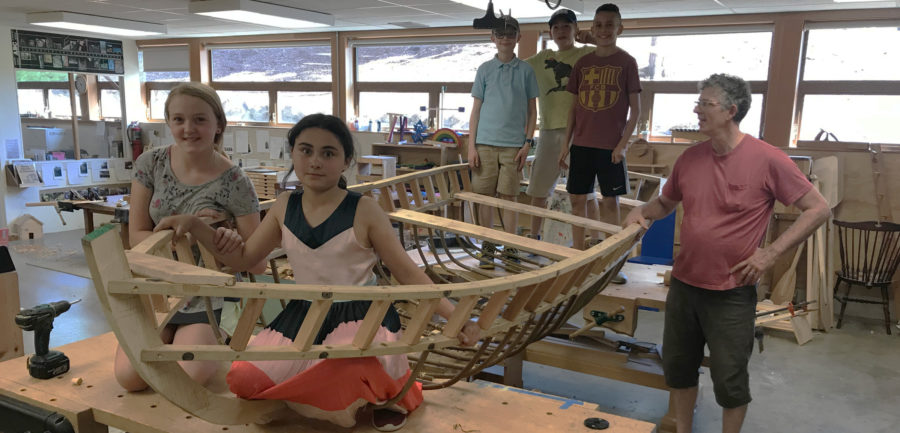

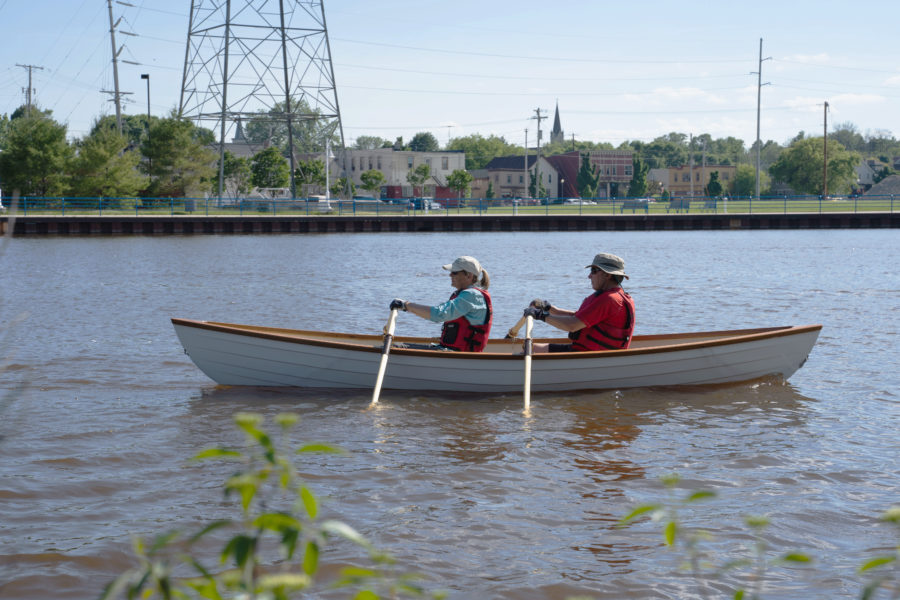
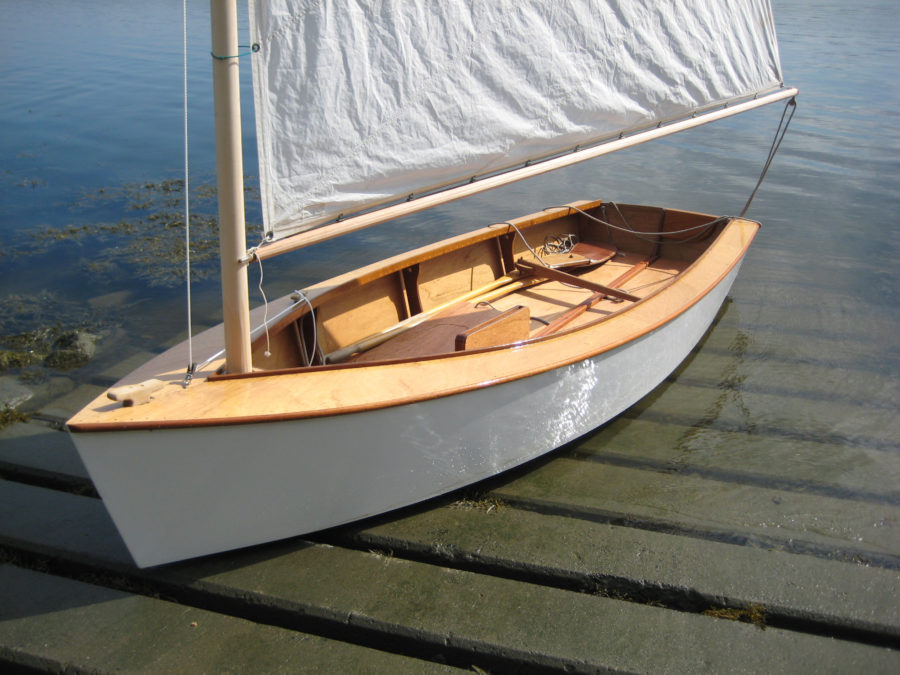
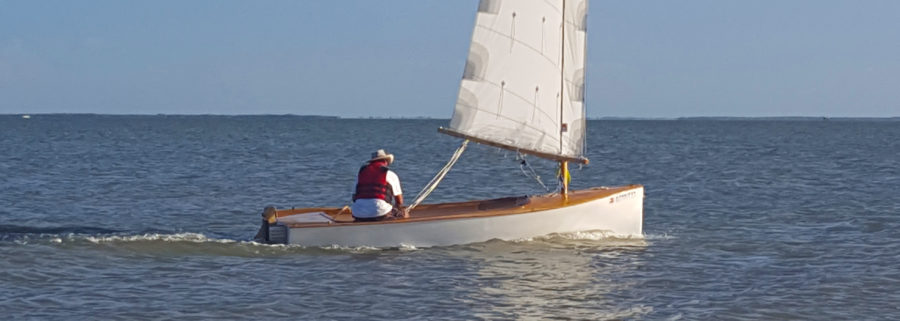
Excellent article, thank you 🙂 (sweet boat, too!)
Thank you for kind comment. I’m glad you enjoyed the article.
Extremely well written! Nice job on the article and thanks for taking the time to write it. The boat looks fun too…
Great fun boat. Built one about 1970.Floated away one night during storm surge. Thinking of building another with the kick-up rudder as mentioned
and a couple bilge boards built into the sides. Will use my canoe-yawl sailing rig.
Thank you for kind comment. I’m glad you enjoyed the article. The Surf is definitely a fun boat.
Great article and fine looking boat! One question: doesn’t it get fatiguing holding onto the sail all the time? Would it be possible to put a cleat somewhere to give your hand a break, or is the boat too lively for it?
Thank you for the comment. I personally haven’t gotten fatigued from holding the mainsheet for several hours straight. The load isn’t huge unless the wind is strong. I have considered adding a couple of cleats, but I sail in places where the wind is shifty, so I like to be holding the mainsheet at all times. You could probably add some jam cleats and do fine as long as you steer to the sail.
A lad that can compose a paragraph. You give me hope for the world. I have always been intrigued and skeptical of Bolger’s designs, so I built two to find out for myself. Both—Clam Skiff and Reuben’s Nymph—perform far better than I hoped. Thanks for the write-up.
Thank you for the kind comment. Phil Bolger seems to have had a talent for designing boats that perform better than their looks alone suggest.
Excellent article and boat, thank you. My copy of Instant Boats is a long-time resident of the shelf in my bathroom :-)…
Any details or photos of the trailer?
Thank you for the comment. For freshwater, I borrowed a Lowe’s mesh wire “utility trailer” and attached bunks using U-bolts and lashings. For saltwater, I made a trailer out of parts from an old, galvanized, 420 trailer a friend was looking to get rid of. On a flat-bottom boat with rocker (e.g. the Surf), the bunks should go side to side, not front to back. The bunks also need notches for the bottom skids and rowing shoe. For bunks, I used two 2x4s on their ends. I can email you some photos if you are interested. The trailer I built looks something like this one:
